
A juvenile, blue tarantula emerges from its burrow at night:
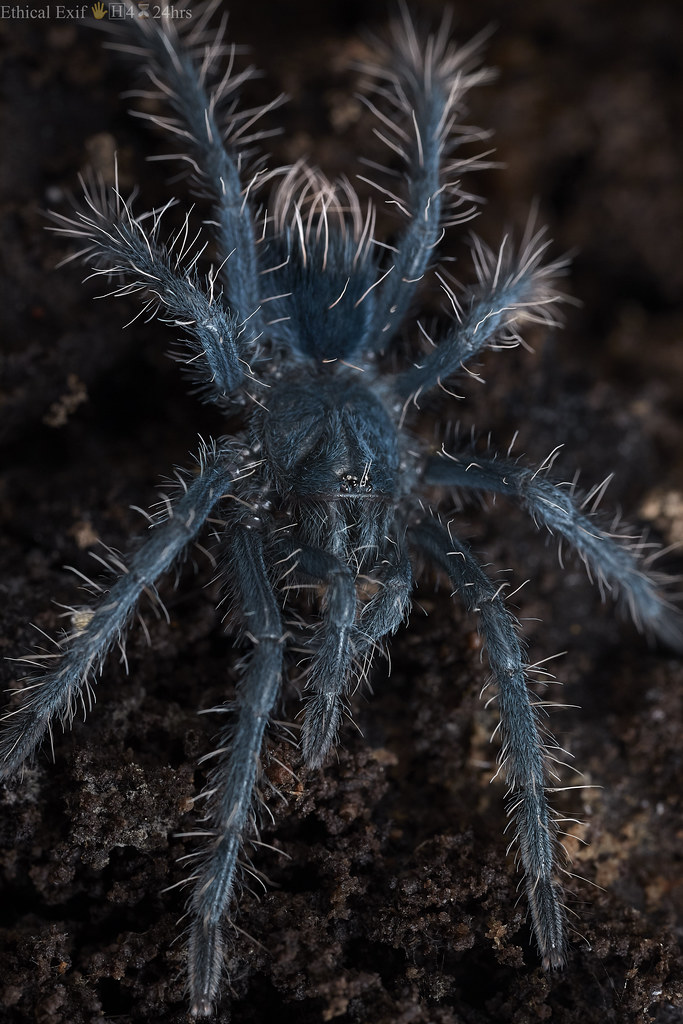
Thread-legged bug (Emesinae) is often confused with either praying mantids or stick insects, but they are actually more closely related to other hemipterans like cicadas, except that they use their piercing mouthparts on other insects, rather than plants:
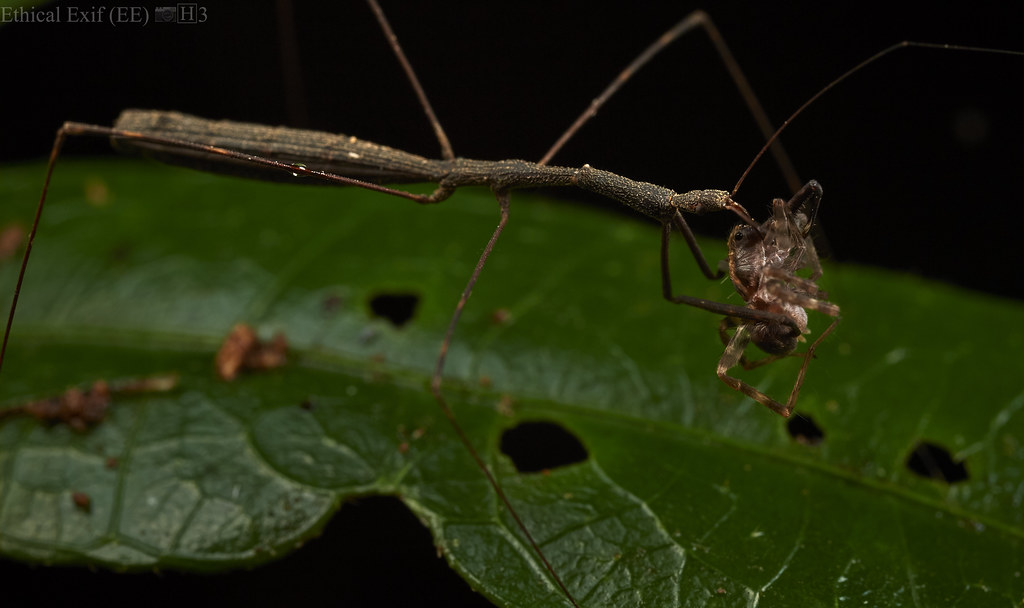
A stick insect with flared protuberances on the legs and abdomen help to disrupt its shape and further complicate its form:

An entomopathogenic fungus is not fooled by the camouflage, however good it may be:
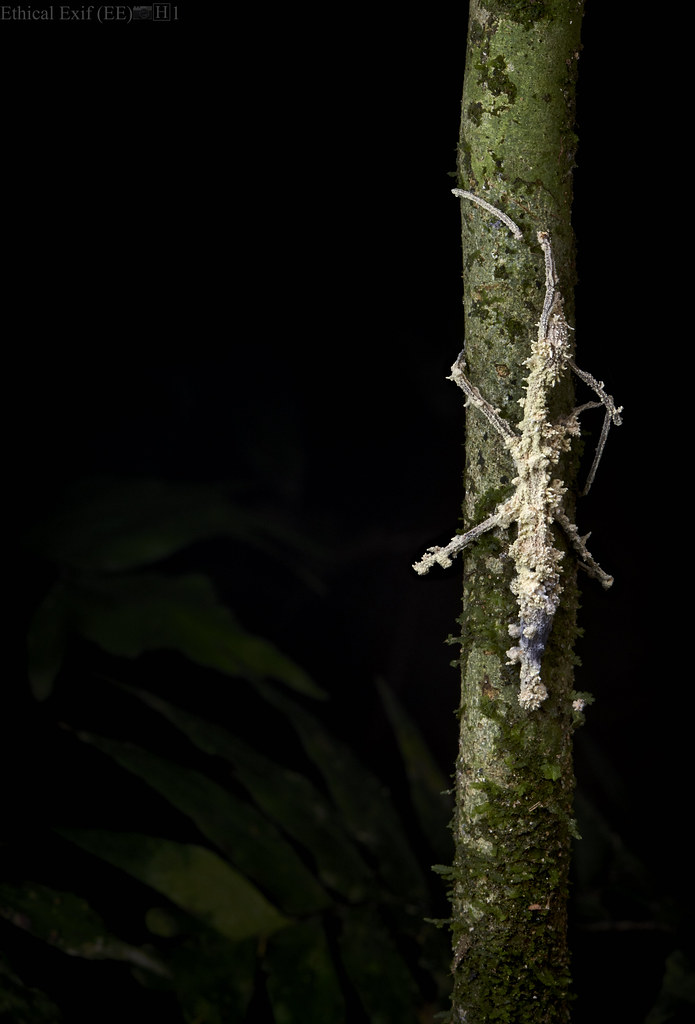
A leaf-mimicking katydid abandons its tree of choice in order to descend to another plant to feed on:

Sexually dimorphic huntsman spiders mating in the rainforest understory. Independently it would be difficult to have determined that these two individuals were the same species, and illustrates the challenges inherent to taxonomy:

A mouse opossum (Marmosa murina) is a voracious insectivore, and remains active throughout the night, locating prey by means of its outsized parabolic ears, protruding eyes and sensitive whiskers:
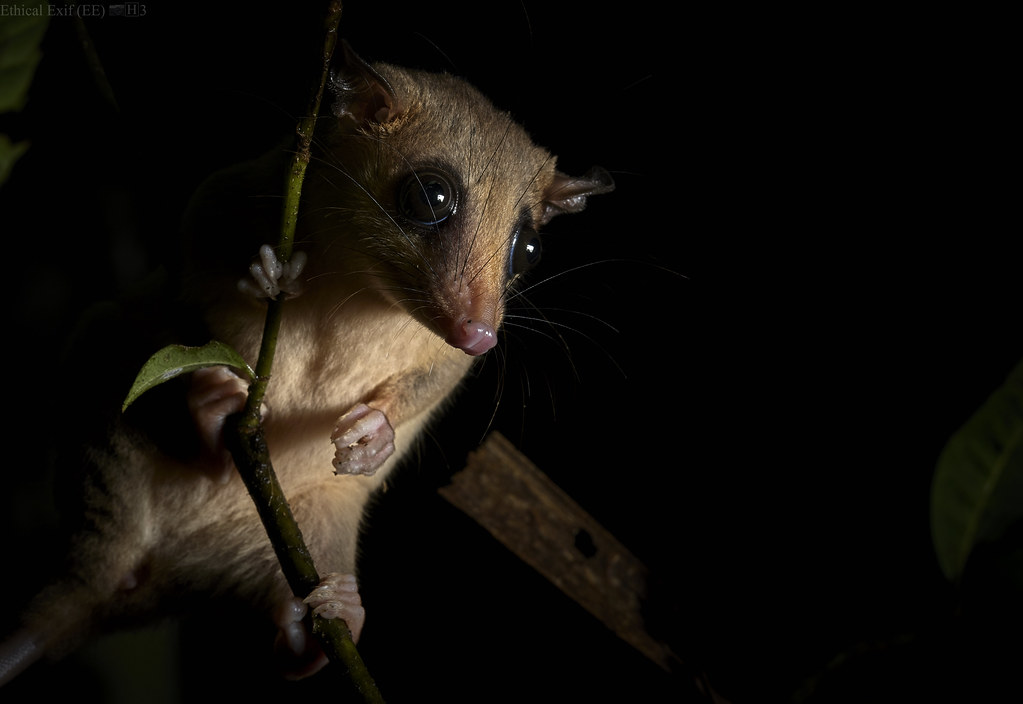
A pirate spider (Gelanor sp.) initially hunts down an orbweaver by plucking at the outer threads of its web. When that fails, it ventures onto the web itself, cutting the radial lines as it makes its way to the centre, cutting off escape routes, while also minimizing the chances that it will itself become ensnared:
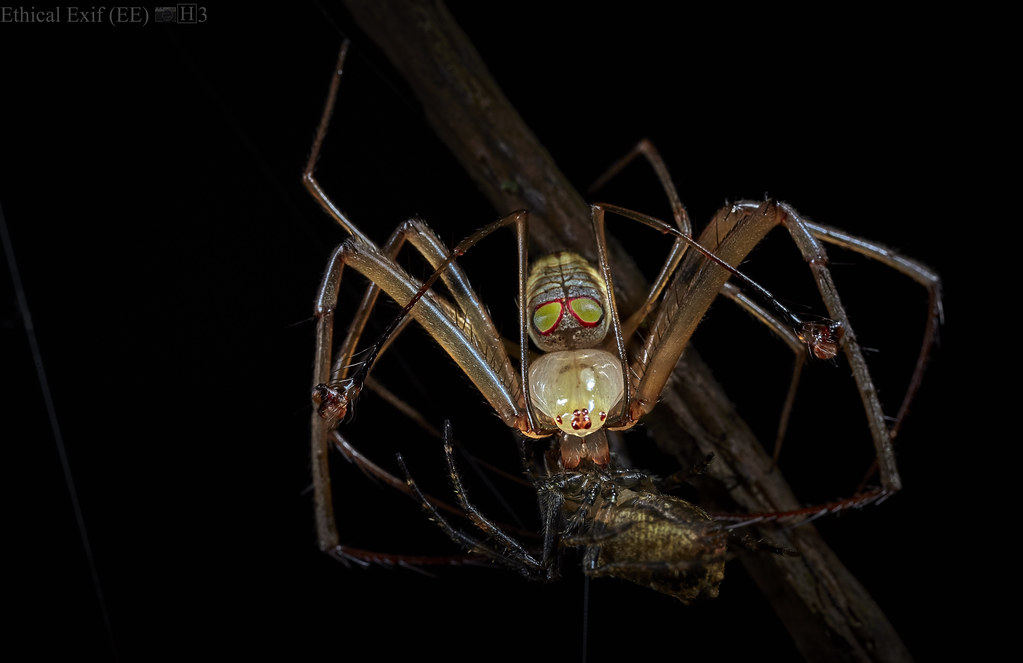
A pair of rain frogs (Pristimantis sp.) in amplexus after heavy rains during the rainy season:
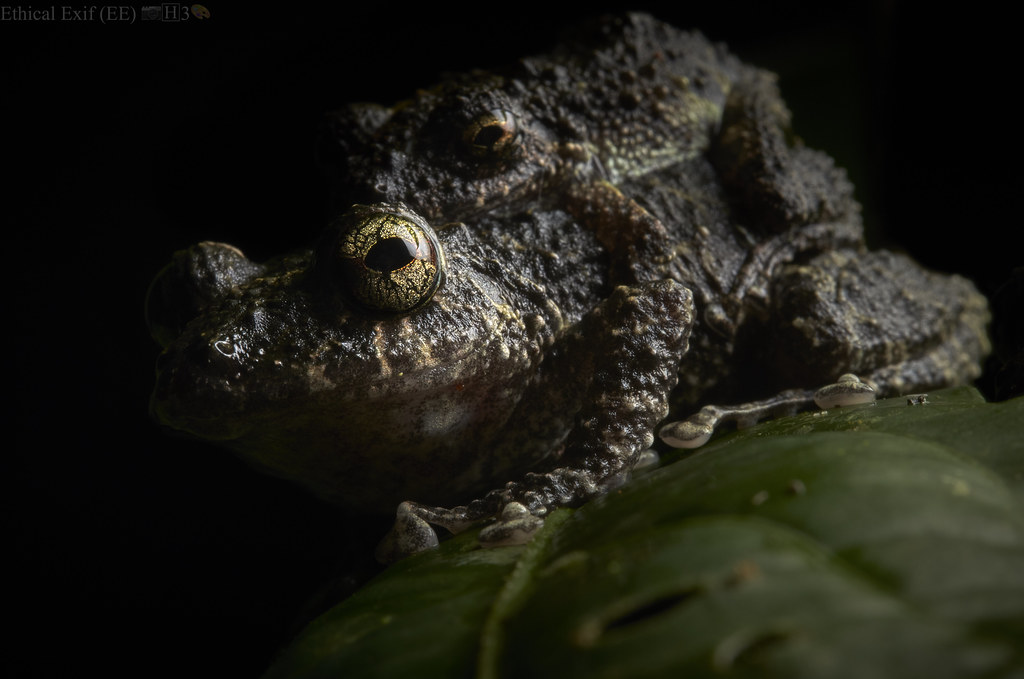
Striated heron fishing:
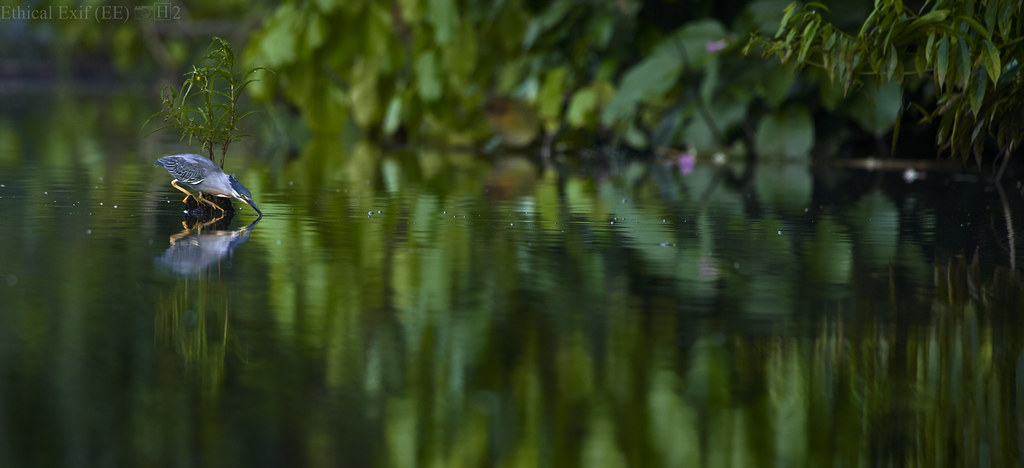
Thanks for looking and commenting,
Paul
